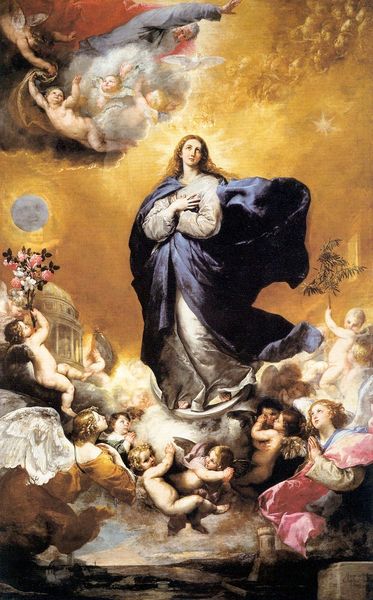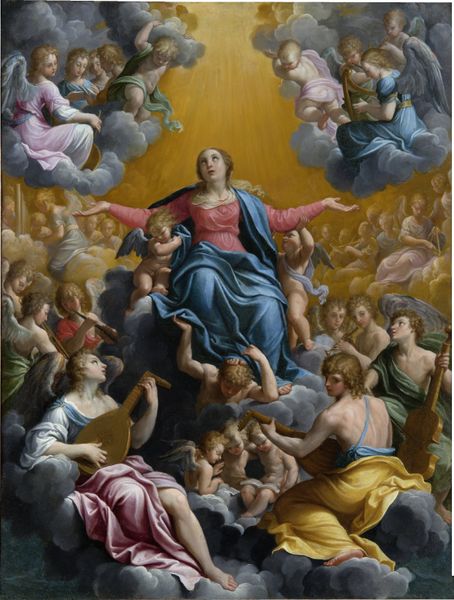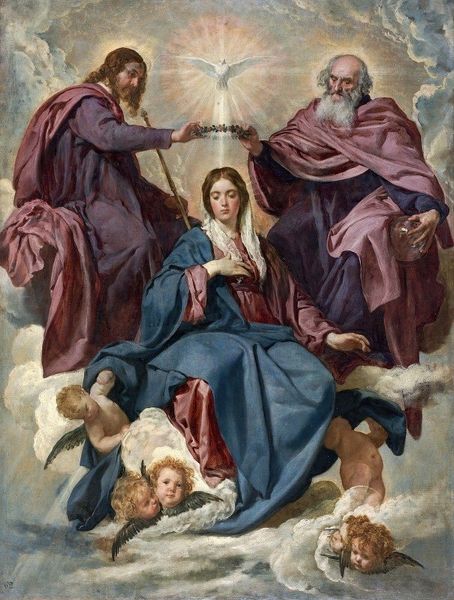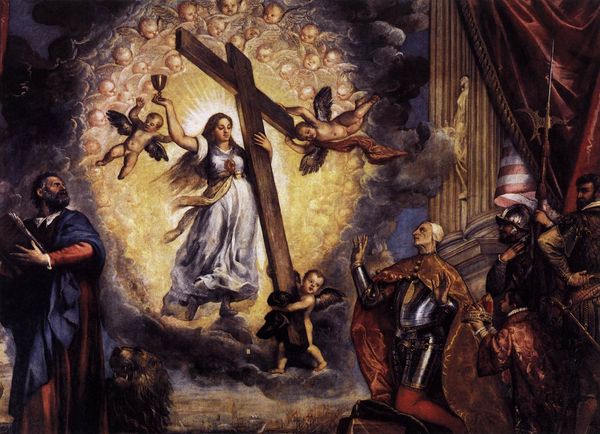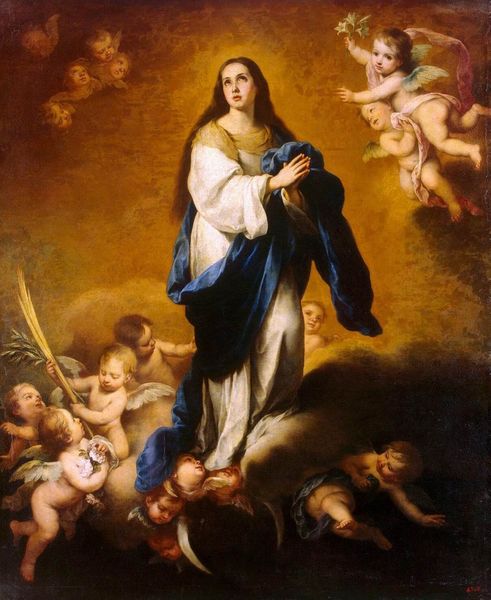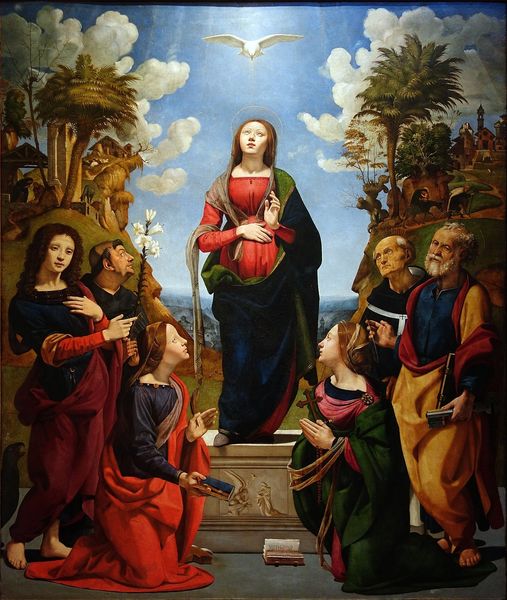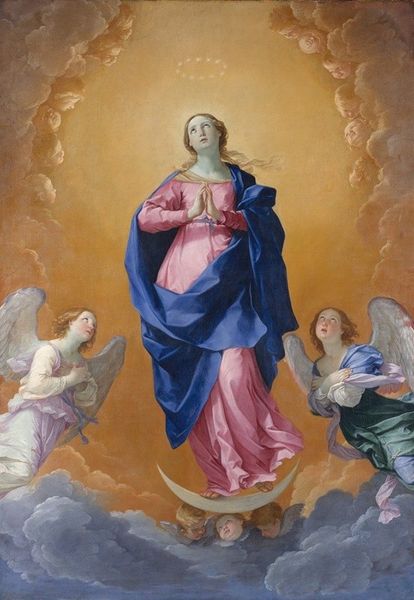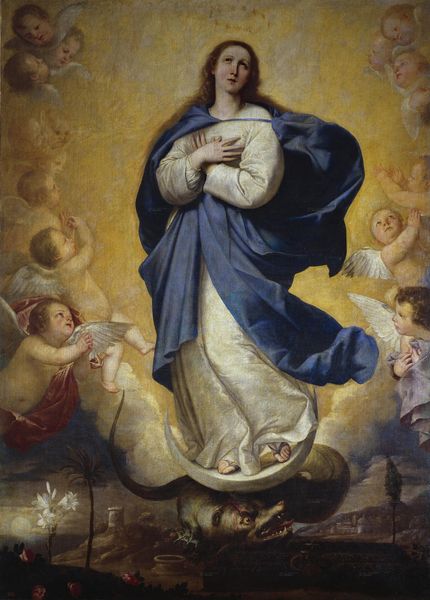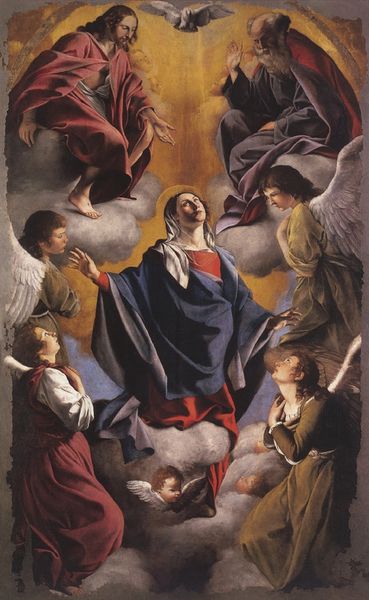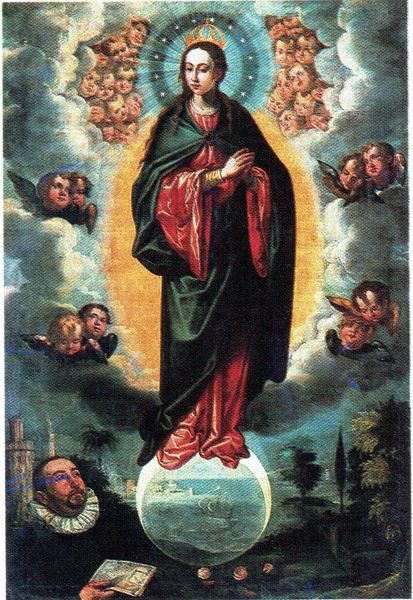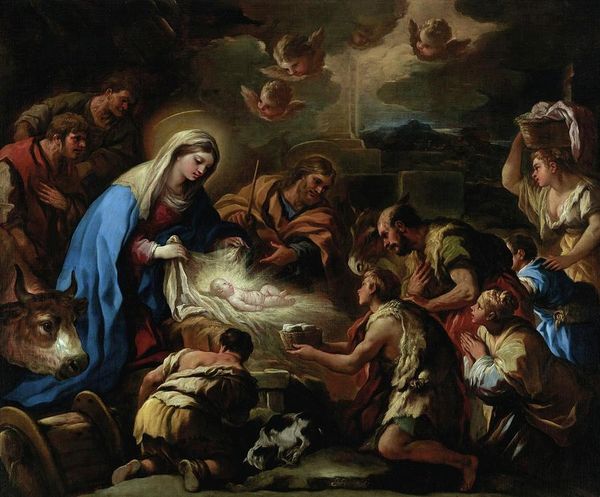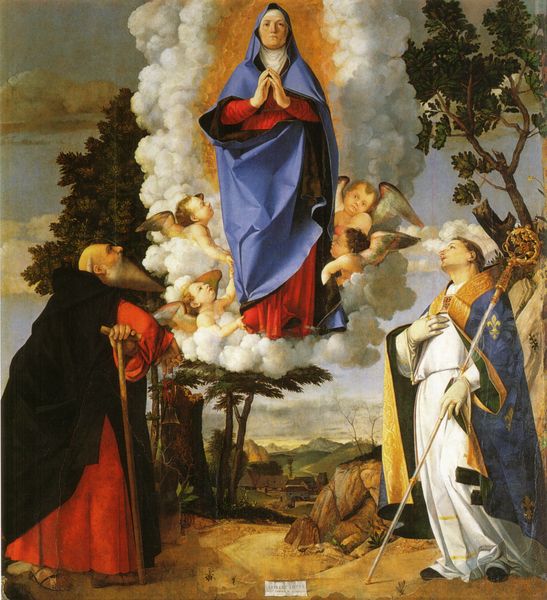
painting, oil-paint
#
portrait
#
venetian-painting
#
allegory
#
baroque
#
painting
#
oil-paint
#
figuration
#
11_renaissance
#
christianity
#
history-painting
#
academic-art
#
virgin-mary
#
angel
#
christ
Copyright: Public domain
Editor: Here we have Guido Reni’s *The Coronation of the Virgin*, painted in 1626. It's an oil painting showing Mary surrounded by angels. The upward swirling movement gives it a real sense of divine ascension. How do you interpret the symbolic weight of this image? Curator: Notice how the angels below are playing musical instruments and looking upward toward Mary. This emphasizes Mary's role as mediator, a symbol of the soul's journey toward divine harmony. But consider also, what does the crown itself signify? Editor: Power? Authority? I suppose it could represent Mary’s acceptance into Heaven, but it feels like more than just that. Curator: Exactly! The crown, placed upon her head by infant angels, represents not only her acceptance but also her triumph. Think of the cultural memory attached to the Virgin Mary - a figure of immense empathy, strength, and unwavering faith. She’s an allegorical representation of ideals, a fusion of motherly love and divine purpose. What do you make of that central positioning within all that celestial light? Editor: The light definitely draws your eye right to her face. It’s hard to miss. Curator: Absolutely. The strategic use of light reinforces her status as a beacon, not just for the figures within the painting, but as an enduring cultural icon, embodying spiritual aspirations. Seeing these images is a process of recalling shared stories, beliefs and human dreams of something more than just our day to day. It also acts as a window to glimpse how faith shapes culture and personal lives. Editor: I never thought about it that way. The image has become more about our own collective yearning for faith than only a Biblical scene. Thanks.
Comments
No comments
Be the first to comment and join the conversation on the ultimate creative platform.
